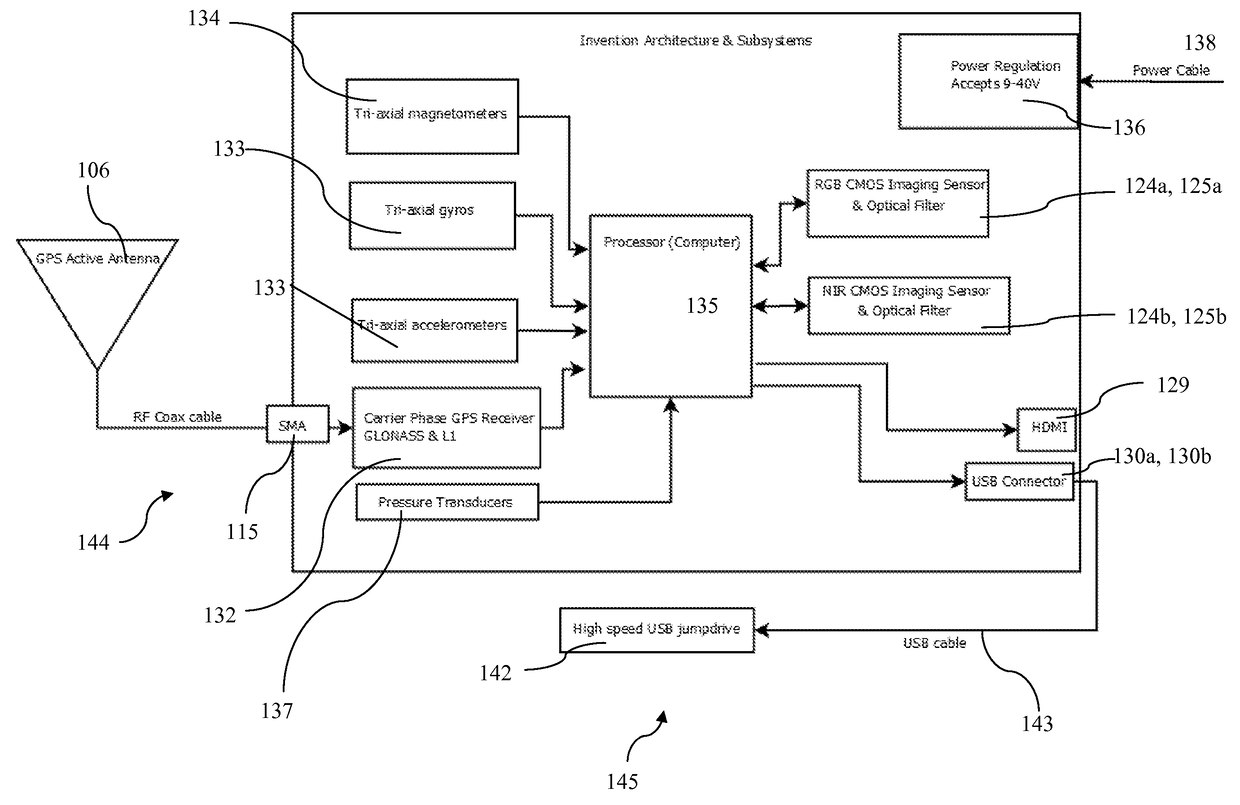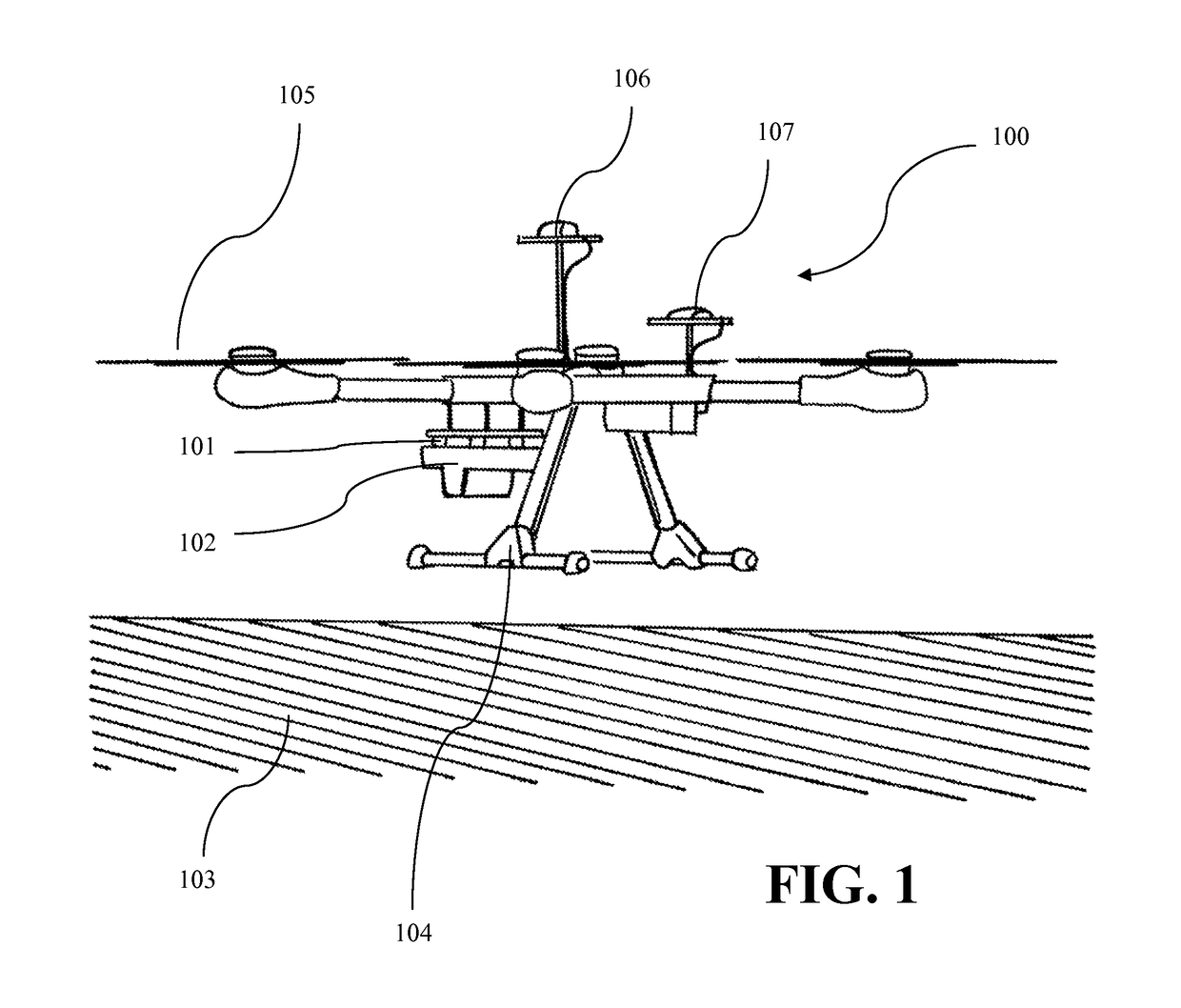Airborne multispectral imaging system with integrated navigation sensors and automatic image stitching
a multi-spectral imaging and navigation sensor technology, applied in image enhancement, radiation control devices, instruments, etc., can solve the problems of insufficient resolution of landsat images, crop damage affecting the reflectance of leaves, and relatively long time period (weeks) between, so as to achieve high-speed, on-demand scan of the field, and precise
- Summary
- Abstract
- Description
- Claims
- Application Information
AI Technical Summary
Benefits of technology
Problems solved by technology
Method used
Image
Examples
Embodiment Construction
[0020]As depicted in FIG. 1, 100 is a multi-rotor platform hovering over an irrigated potato field 103, but field could contain any crop type or other foliage, including, for example, corn, soybean, wheat or any type of fruit tree, vine, nut, vegetable or tropical fruit. Multi-rotor platform 100 can be any airborne vehicle capable of carrying a payload and is mounted with vibration isolators 101 and enclosed in a mechanical enclosure 102 in an embodiment. Multi-rotor Unmanned Aerial Vehicles (UAVs) are ideal platforms for remote sensing applications due to their ability to withstand high wind environments as well as the ease of use to entry level UAV operators for take-off and landing events. Additionally, multi-rotors can be used when hovering or low-speed flight is desirable for specific high resolution applications. The multi-rotor depicted in FIG. 1. includes high efficiency propellers 105, landing gear 104, and the multi-rotor aerial vehicle mission critical GPS system 107. The...
PUM
| Property | Measurement | Unit |
|---|---|---|
| NIR | aaaaa | aaaaa |
| surface reflectance | aaaaa | aaaaa |
| GPU acceleration | aaaaa | aaaaa |
Abstract
Description
Claims
Application Information
 Login to View More
Login to View More - R&D
- Intellectual Property
- Life Sciences
- Materials
- Tech Scout
- Unparalleled Data Quality
- Higher Quality Content
- 60% Fewer Hallucinations
Browse by: Latest US Patents, China's latest patents, Technical Efficacy Thesaurus, Application Domain, Technology Topic, Popular Technical Reports.
© 2025 PatSnap. All rights reserved.Legal|Privacy policy|Modern Slavery Act Transparency Statement|Sitemap|About US| Contact US: help@patsnap.com



